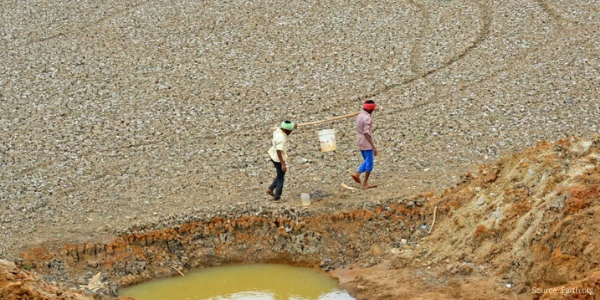
Missing: Indigenous Voices on the Climate Crisis
25 February 2020
This blog is part of a series on youth activism, and how the youth can contribute to policymaking on the climate crisis. The previous post can be found here.
An important lesson learnt from the climate strikes organised across the globe was the voices it provided a platform for. Youth, who were otherwise involved in daily school activities, were now taking to the streets every Friday to peacefully protest and march as a part of the global Fridays for Future strikes initiated by Greta Thunberg in Sweden. In time, with easy accessibility to the internet and news published online, the movement received attention from policymakers. Formal events such as those hosted by the United Nations provided the youth activists with a platform to share their concerns and put forth their call to action – that governments must act. Select youth leaders were invited for discussions, but their impact on policy negotiations was limited if at all.
While the youth have been able to raise visibility on climate change, climate action will need more. They have recognised that they do not represent the needs of the society at large. In this, they have an untapped ally – the indigenous people – worldover. Some youth activists have realised that the activists from indigenous communities have not yet been heard. This has implied that neither their problems nor their solutions, informed by hyperlocal expertise and an ecological connection unknown to residents of cities, has been brought to the table.
In developing countries like India, the gap between urban policy makers and rural residents has been large with regard to tackling the effects of climate change. Take for instance sinking islands in the Sunderbans that have been documented in detail with emphasis on factors that will lead to many millions migrating in search of stable livelihoods. In another research, conducted by Asem Chanu Manimala who is a part of the Pangsau Collective, insights into the lives of tribes there offers important lessons. The tribes construct floating houses (known as phum) on the Loktak lake in Manipur. Fishing has served as the main source of their livelihoods, and their age-old tradition of constructing floating houses has also benefited certain species of fish. In 2011, The Manipur Loktak Lake (Protection) Act of 2006 enforced burning down many of their houses which forced them to settle on the banks of the river. Coping with irregular fish distribution due to climate change has only made their struggles worse.
Youth activists are using their agency to bring to light the many struggles of various indigenous communities across the globe. Through social media accounts such as ‘Adivasi lives matter‘ and ‘Mongabay India‘ on Instagram, activists are creating dialogue. They are providing context for their followers to understand the issues that India’s tribal communities are facing in the form of pictures, videos and interviews.
An equitable solution to the climate crisis as advocated by the youth activists now need to integrate voices from indigenous tribes (or adivasis) in India. Inclusion of tribal communities in acts of responsive governance may hold the solution to tackling temperature rise and the disasters that will follow for at-risk citizens.
Sidharth is a former intern at the Accountability Initiative. He is currently a postgraduate student at Sciences Po.





